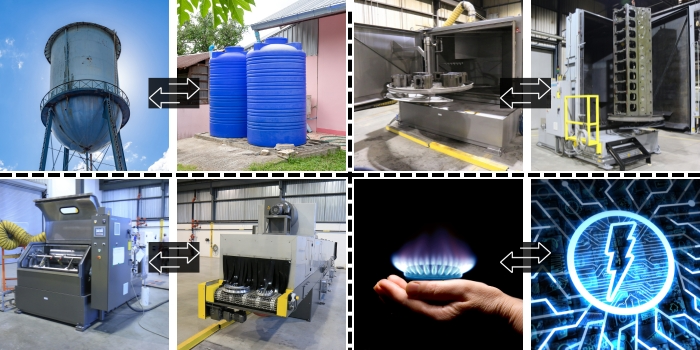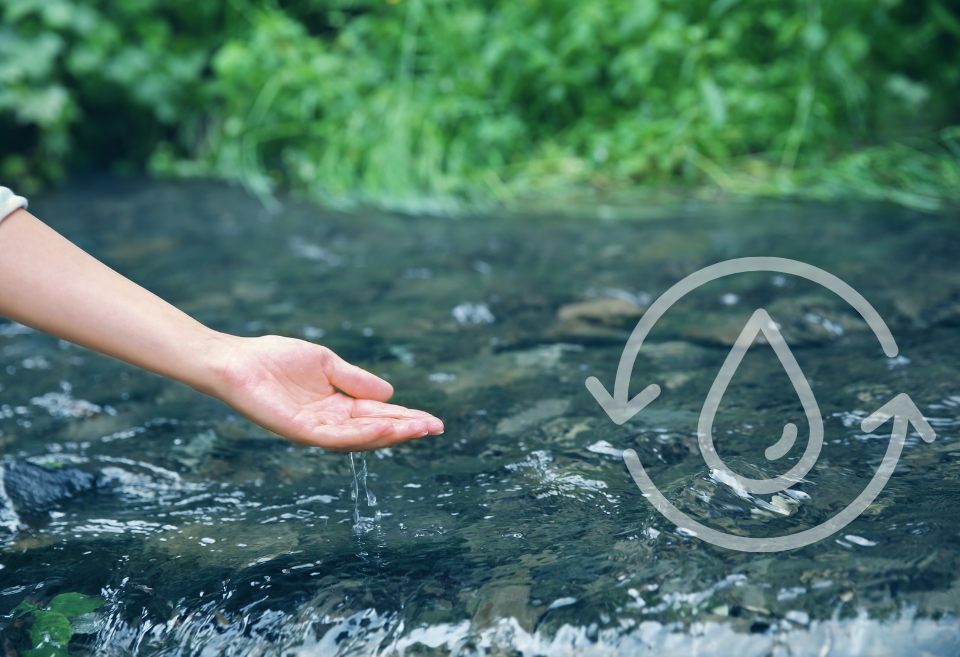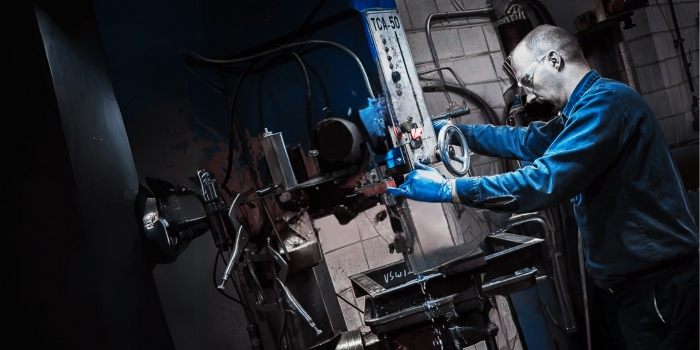When it comes to aqueous cleaning, the focus is often on how to clean the parts. However, drying the parts is another challenge faced by aqueous cleaning equipment manufacturers, particularly with parts of complex geometries. In this blog, we will explore various methods of drying parts and when to utilize them.
DIFFERENT OPTIONS TO DRY PARTS
1. Ambient Drying
For applications where part dryness is not critical and time is not a constraint, utilizing the residual heat from the cleaning process to allow liquid to evaporate is the simplest method. As the wash solution is heated, any unpooled water will evaporate, leaving the surface dry. Washing at higher temperatures increases evaporation and accelerates the drying process. This solution is suitable for low production rates with some moisture tolerance, without extra cost. Parts with cavities will require manual intervention with either a vacuum air gun or compressed air.
2. Compressed Air Blow-off
Another method involves using compressed air to dry the parts. This method consists of nozzles installed in the drying cabinet to direct compressed air at the parts. Compressed air drying is commonly used in small cabinet washers with low production cycles, but it increases operating costs. It is also very effective for addressing blind holes, cavities, or similar features on parts. On the downside, operating costs can be high, and residual moisture might remain on the parts.
3. High Pressure Air Blow-off (ambient or heated)
High Pressure air blow-offs are the most commonly used drying method in aqueous cleaning equipment. One or multiple air knives coupled with a regenerative blower are used to direct high pressure air at the parts. This method efficiently eliminates extra moisture and speeds up the flash-drying process. Regenerative blow-offs are more cost-effective than compressed air drying, particularly for continuous machines. They help to reduce operating costs significantly. However, it is only effective for similarly sized parts with a geometry that prevents water from pooling. Combining a regenerative blow-off with targeted compressed air nozzles can help address residual moisture in tapped or blind holes. Rotating the parts during the blow-off process is another way to facilitate drainage and ensure that no water is trapped in the internal passages.
A heating element can be added to the blower discharge to heat the air and accelerate water evaporation. However, heated blow-off is not compatible with all materials and may cause issues for subsequent manufacturing operations, which can be sensitive to part temperature. It is important for operators to wear protective gloves when manually unloading heated parts from the machine.
4. Vacuum Drying
Vacuum drying employs a vacuum pump to reduce the ambient pressure around the substrate that needs drying. This reduction in pressure lowers the boiling point of the water contained within the product, which in turn significantly enhances the evaporation rate. Parts are placed in a vacuum chamber, and pressure is reduced to around 5 to 10 Torr (mmHg). At this pressure, water boils at ambient temperature and evaporates, ensuring thorough drying, especially in hard-to-reach areas.
Vacuum drying is ideal for complex parts when 100% dryness is required. To achieve this level, it is necessary to remove excess moisture before processing parts in the vacuum dryer. Regenerative blow-off prior to vacuum drying accomplishes this. Additionally, the part temperature must be at least 110-120°F for the process to be effective. A significant benefit of this technique is that the energy needed for the liquid to undergo a phase change is drawn from the product itself, resulting in the product’s temperature reduction. The main drawback, however, is the additional upfront equipment cost.
Choosing the Best Technology
The choice of drying technology depends on factors such as part material, part geometry, solution temperature, exposure time, and specific drying requirements. Whether dealing with automotive components, aerospace parts, or industrial machinery, choosing the appropriate drying technique is crucial for preparing cleaned components for subsequent stages of production.
Manufacturers can improve product quality and maintain efficient production lines by understanding available drying technologies for parts cleaning processes.
Schedule a free consultation with the PROCECO team today.



